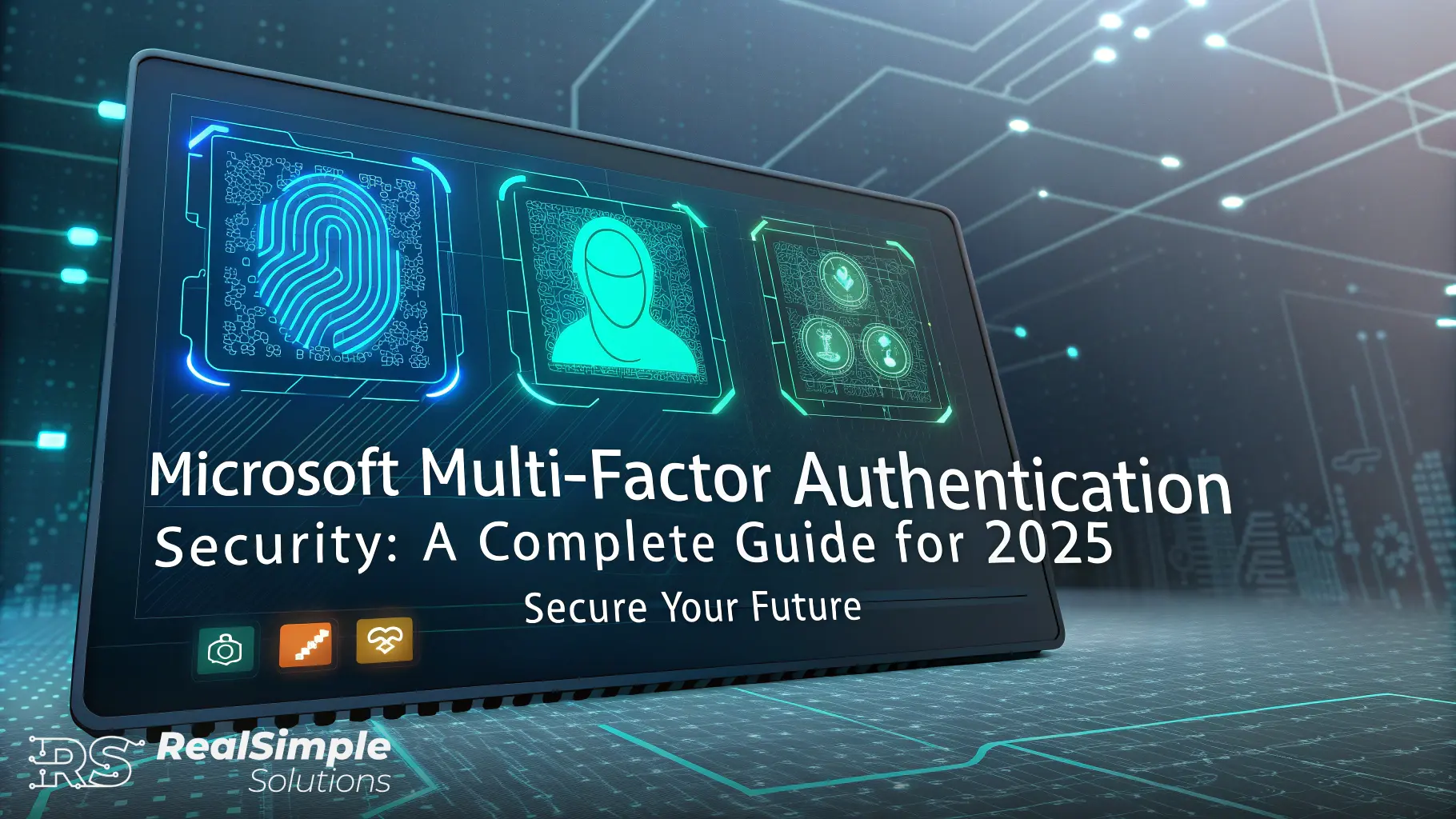Microsoft Multi-Factor Authentication Security: A Complete Guide for 2025

Microsoft Multi-Factor Authentication Security: A Complete Guide for 2025
Strengthening Your Digital Defenses in 2025
In today's increasingly sophisticated threat landscape, a single password is no longer enough to protect your valuable digital assets. Microsoft Multi-Factor Authentication (MFA) has emerged as a critical security tool for organizations of all sizes. As cybersecurity threats continue to evolve in 2025, implementing robust MFA protocols has become not just a recommendation but a necessity for businesses serious about protecting their sensitive information. In this comprehensive guide, we'll explore how Microsoft Multi-Factor Authentication security can significantly enhance your organization's security posture, the latest features and best practices, and how to implement it effectively across your enterprise.
Understanding Microsoft Multi-Factor Authentication Fundamentals
Why Multi-Factor Authentication (MFA) Matters in 2025
Gone are the days when a password alone could safeguard your data. MFA adds an additional layer of protection by requiring users to verify their identity using two or more factors:
- Something you know (a password or PIN)
- Something you have (a smartphone or security token)
- Something you are (biometric verification such as a fingerprint or facial recognition)
MFA drastically reduces the risk of unauthorized access, especially in a world where phishing attacks and credential theft are on the rise.
How Microsoft MFA Fits Into the Microsoft 365 Security Ecosystem
Microsoft MFA integrates seamlessly into Microsoft 365 and Azure Active Directory (Azure AD), reinforcing your access controls. Its compatibility with other security features like Conditional Access allows for a cohesive security strategy that adapts to ever-changing cyber threats.
Benefits and Statistics on MFA
Consider this: Microsoft reported that enabling MFA blocks 99.9% of automated attacks. Moreover, organizations leveraging robust MFA solutions have seen a significant drop in data breaches—a vital metric in today's risk-heavy digital environment.
Authentication Methods Supported
Microsoft MFA offers a variety of flexible authentication methods to suit organizational needs:
- Microsoft Authenticator app
- SMS or phone call verification
- Hardware security keys (FIDO2)
- Biometric options such as Windows Hello
Setting Up Microsoft MFA for Your Organization
Step-By-Step Implementation Guide
Introducing Microsoft MFA into your organization doesn’t have to be daunting. Here's how to get started:
- Access the Admin Center: Log into Microsoft 365 Admin Center or Azure Active Directory (Azure AD).
- Enable Security Defaults: Simplify the process by enforcing predefined security defaults.
- Configure Conditional Access: Create policies that require MFA in specific scenarios (e.g., accessing sensitive files).
- Enroll Your Users: Encourage your team to register their preferred authentication methods during onboarding to ensure adoption.
- Test the Setup: Conduct pilot testing with a small team to identify and resolve potential issues before full roll-out.
Troubleshooting Tips
- Problem: Users unable to receive verification texts.
- Solution: Confirm phone numbers and check service provider compatibility.
- Problem: Frequent MFA prompts causing frustration.
- Solution: Fine-tune Conditional Access policies to minimize disruptions.
Advanced Microsoft MFA Security Features in 2025
The Latest Security Enhancements
Microsoft consistently updates MFA to stay ahead of cybersecurity challenges. Innovations in 2025 include:
- Risk-Based Conditional Access: Dynamically adjust MFA requirements based on user behavior and login risks.
- Passwordless Authentication: Use biometric logins or FIDO2 security keys to eliminate passwords entirely.
- Zero Trust Implementation: Strengthen your Zero Trust security model by verifying every access request.
Embracing Passwordless Authentication
Passwordless systems aren’t just convenient—they're more secure. Microsoft support for options like Windows Hello and FIDO2 keys makes traditional passwords a thing of the past, protecting against phishing and credential-stuffing attacks.
Managing and Monitoring MFA in Enterprise Environments
Administrative Tools for MFA Management
Scaling MFA across large organizations requires efficient management tools. Microsoft provides:
- Azure AD Insights: To monitor MFA usage.
- Authentication Methods Activity Reports: For tracking user behaviors.
Enhancing User Experience
Balancing security and usability is crucial. To minimize friction:
- Use Conditional Access to customize the MFA experience for different user roles.
- Enable “remember me” options for trusted devices.
Best Practices for Microsoft MFA Security in 2025
Key Recommendations
To ensure a robust Microsoft Multi-Factor Authentication security setup:
- Always enable Conditional Access policies.
- Regularly train employees on recognizing phishing attempts.
- Stay proactive by reviewing MFA logs and reports.
Addressing Vulnerabilities
No system is foolproof. Common vulnerabilities include:
- Oversharing personal information: Educate employees on safe practices.
- Social engineering threats: Deploy tools to verify suspicious login attempts.
By addressing these points, you can maximize the effectiveness of MFA.
Conclusion
As cyber threats become increasingly sophisticated in 2025, Microsoft Multi-Factor Authentication security serves as a cornerstone of resilient organizational defenses. By adopting the latest advancements, implementing best practices, and dedicating efforts to employee training, you can significantly fortify your security while maintaining an intuitive user experience.
Remember: cybersecurity is an ongoing process, and MFA is a vital layer of protection. Embrace Microsoft MFA and take your organization’s security to new heights.
Start automating today to secure your digital future.